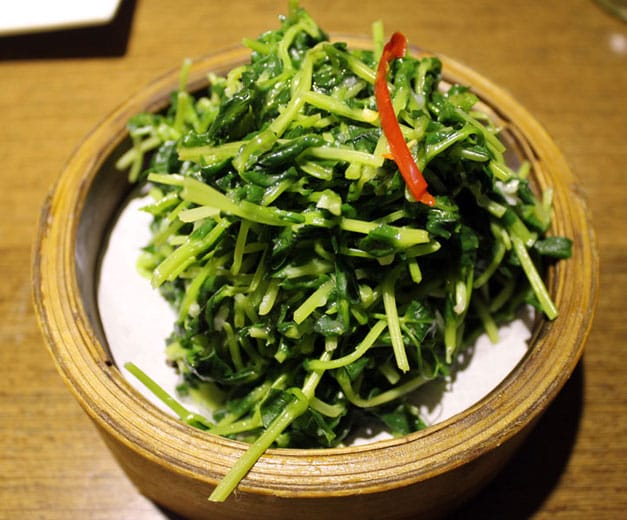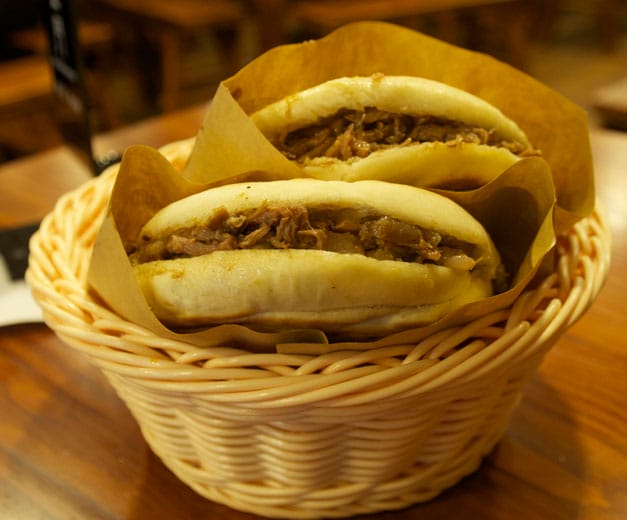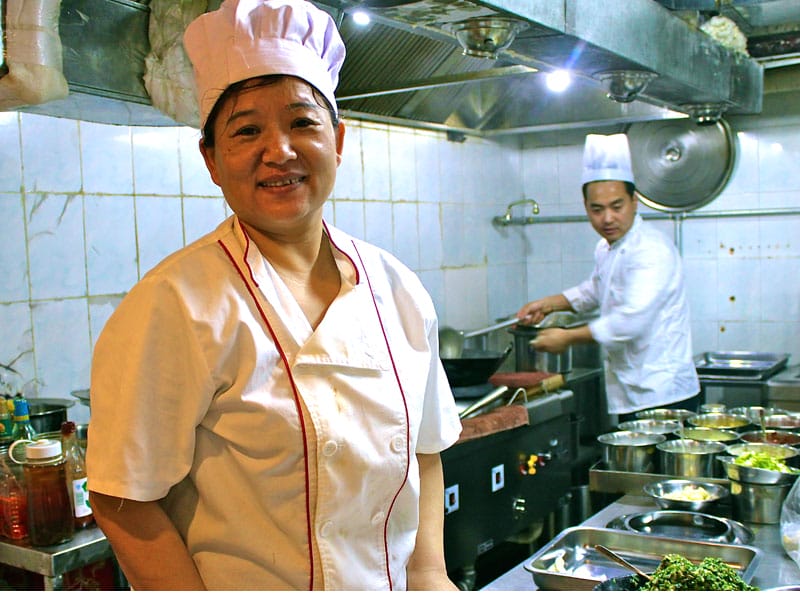Editor’s note: We regret to report that Bai Jia Qian Wei has closed.
Mention Anhui to most Shanghai residents, and you’ll most likely get a response along the lines of, “My āyí [maid] is from there.” Migrant workers from Anhui, one of the country’s poorest provinces, flood into Shanghai tasked with building the city’s skyline, massaging the clenched shoulders of white-collar workers and washing our dishes. Despite the fact that the province is the source of a third of all of Shanghai’s migrant workers – and that its cuisine ranks among China’s Eight Culinary Traditions – Anhui food isn’t held in the same regard as Sichuan or Cantonese by Shanghai gourmets.
Bai Jia Qian Wei seeks to change that mindset, one bite at a time. The restaurant, whose name translates loosely as “100 Families, 1,000 Tastes” (though they’ve gone with the more poetic “Enjoy More Taste” for their official English moniker), opened in 2009 in a Shanghai mall, in a sleek-looking space complete with mirrors on the ceiling – a sharp contrast to the widespread poverty back home. While we tend to avoid dining at shopping destinations, this restaurant has us returning to the mall’s well-lit corridors of commerce for piquant home-style flavors.
The cuisine of Anhui is influenced by the province’s rocky geography; it relies heavily on locally grown produce from Huangshan, a cloud-shrouded mountain range turned tourist attraction that provides fertile soil for nearly 1,500 species of plants growing on its peaks. Ingredients are simple, with produce making up the bulk of meals, and dried meats and chilies adding flavor to stewed and braised dishes. High-yield bamboo not only provides furnishings and construction materials around Anhui, it also doubles as hearty fare on the cheap.
Practically every page of Bai Jia’s glossy menu has some culinary variation on the world’s fastest-growing grass, including the popular roasted mountain bamboo (问政山烤笋, wènzhèngshānkǎosǔn), picked all in one spring day by the villagers of Wenzheng Mountain. Another of our favorite dishes at Bai Jia is the fragrant bean seedlings (豌豆苗香, wāndòumiáoxiāng), which are stir-fried in rapeseed oil with thinly sliced chili. The emerald shoots are finished off by being steamed in bamboo baskets that double as serving dishes.
Salted pork is another local Anhui specialty, and we like it best in the form of cured pork belly stir-fried with spring bamboo shoots and leek (春笋乳香肉, chūnsǔnrǔxiāngròu). This inoffensive-looking dish packs an unexpected fiery wallop: the lack of visible chilies on the plate means diners are in for a surprising first bite. Our Anhui-native ayi unraveled the mystery of the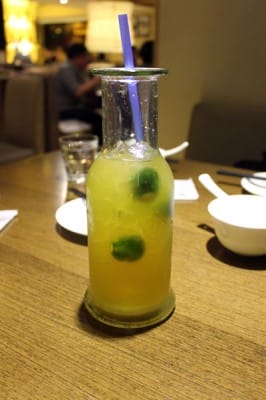 invisible spice, explaining that when she was growing up, her mother simmered dried red chilies in water with salt and MSG, then used the spice-infused liquid to boil the hearty bamboo stalks before stir-frying them. A plate of sweet rice pancakes (酒香米粑, jiǔxiāngmǐbā) serves to cool your palate (if you ignore the fermented bean paste dip spiked with chili flakes that comes with it, though we advise that you don’t – it’s delicious). The best way to put out any mouth fires is to order a side of organic rice and a pitcher of sweet green calamansi (calamondin orange) tea (冰洁茶, bīngjiéchá), served on ice and with a long straw.
invisible spice, explaining that when she was growing up, her mother simmered dried red chilies in water with salt and MSG, then used the spice-infused liquid to boil the hearty bamboo stalks before stir-frying them. A plate of sweet rice pancakes (酒香米粑, jiǔxiāngmǐbā) serves to cool your palate (if you ignore the fermented bean paste dip spiked with chili flakes that comes with it, though we advise that you don’t – it’s delicious). The best way to put out any mouth fires is to order a side of organic rice and a pitcher of sweet green calamansi (calamondin orange) tea (冰洁茶, bīngjiéchá), served on ice and with a long straw.
Saving the best for last, the aptly named house specialty is “satisfied” chicken soup (如意鸡, rúyìjī). In this dish, a whole free-range chicken is stewed in a golden broth for hours, until it’s so tender that chopsticks can slice through the meat like a cleaver. After a meal like that, you’ll never look at a Shanghai masseuse in the same way again.
This article was originally published on March 12, 2013.
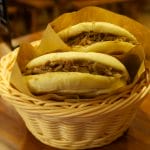 May 12, 2014 Zhu Que Men
May 12, 2014 Zhu Que Men
Unwieldy English restaurant names often lose a lot in translation. Take Zhu Que Men, or […] Posted in Shanghai June 12, 2013 Lu Dajie
June 12, 2013 Lu Dajie
It’s not every day that you find a former national volleyball champ in the kitchen, but […] Posted in Shanghai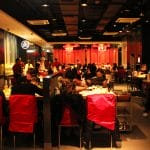 January 22, 2013 Hai Di Lao
January 22, 2013 Hai Di Lao
Good service in China is a relative term, and the longer you live here, the lower your […] Posted in Shanghai
Published on June 02, 2015
Related stories
May 12, 2014
ShanghaiUnwieldy English restaurant names often lose a lot in translation. Take Zhu Que Men, or “The Gate of the Vermillion Bird.” The name, which draws on Chinese astrology and Taoism, might seem a little highfalutin’ for a home-style noodle joint, but the subtext speaks volumes. Ancient Chinese scientists paired an animal with each directional point…
June 12, 2013
ShanghaiIt’s not every day that you find a former national volleyball champ in the kitchen, but that’s just the case with Lu Dajie (aka “Big Sister” Lu) and her eponymous restaurants. After a successful career with the Chinese military’s volleyball team, followed by years working in restaurants for others, she left her hometown of Jianyang…
January 22, 2013
ShanghaiGood service in China is a relative term, and the longer you live here, the lower your expectations sink. The Michelin Guide allegedly won’t deign to cross over the Hong Kong border into China because they refuse to sully their white-tablecloth reputation by doling out stars to restaurants with subpar service. But the inspectors must…







































